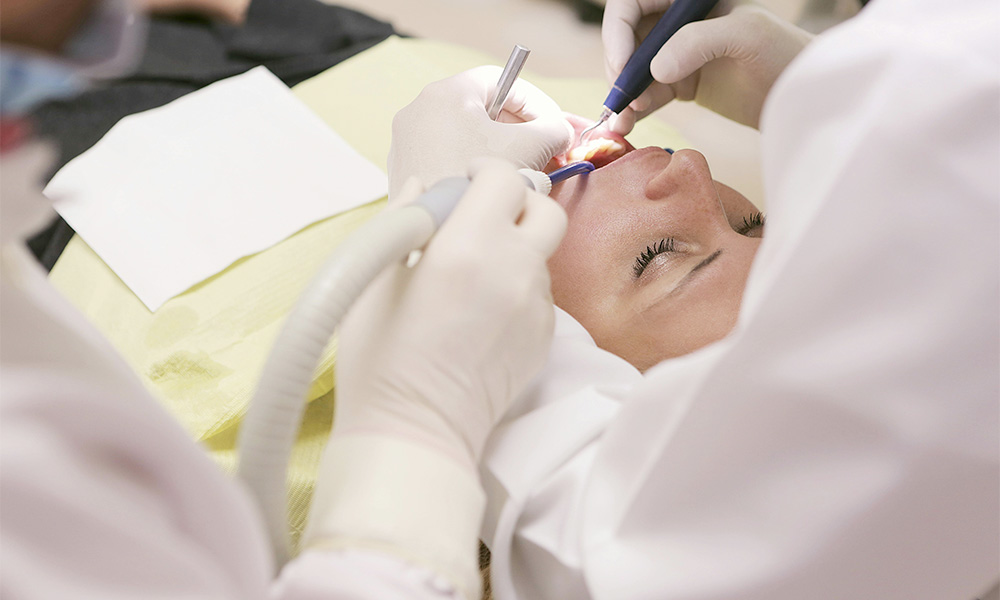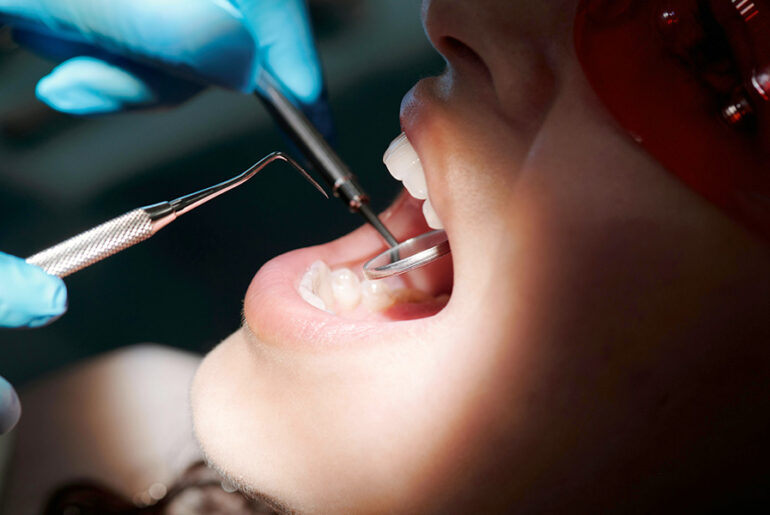A calculus bridge represents one of the most severe forms of dental tartar buildup, creating a hardened deposit that spans across multiple teeth. This condition develops when plaque accumulates and mineralizes over time, forming a solid connection between adjacent teeth that can seriously compromise oral health.
What Does a Calculus Bridge Look Like?
Color and Texture Variations
Calculus bridges typically appear as yellowish-brown to dark brown deposits that form a continuous band across the lower front teeth. The coloration depends on several factors, including diet, smoking habits, and the length of time the buildup has been developing. Fresh calculus may appear lighter yellow or cream-colored, while older deposits take on darker hues due to staining from food, beverages, and tobacco products.
The texture feels rough and irregular to the tongue, quite different from the smooth surface of healthy tooth enamel. When you run your tongue along the inside of your lower front teeth, a calculus bridge creates a bumpy, uneven sensation that extends from one tooth to another without interruption.
Size and Shape Characteristics
These deposits often form a bridge-like structure that connects two or more teeth, most commonly affecting the lower incisors and canines. The buildup typically starts at the gum line and can extend upward toward the biting edges of the teeth. In severe cases, the calculus bridge may completely obscure the natural tooth contours, making individual teeth appear fused together.
The thickness varies significantly depending on how long the condition has been developing. Early-stage calculus bridges may appear as thin, crusty deposits, while advanced cases can create substantial bulky formations that significantly alter the appearance of the teeth.
Physical Symptoms and Sensations
Gum-Related Warning Signs
The presence of a calculus bridge often triggers noticeable gum irritation and inflammation. The gums around the affected area typically appear red, swollen, and tender to touch. Many people experience bleeding during brushing or flossing, particularly when the bristles or floss comes into contact with the irritated gum tissue surrounding the calculus deposits.
The hardened tartar creates an ideal environment for bacterial growth, leading to persistent gum inflammation known as gingivitis. This inflammatory response causes the gums to become puffy and may result in a deeper red or purple coloration compared to healthy pink gum tissue.
Oral Discomfort and Sensitivity
Calculus bridges often cause various forms of oral discomfort. The rough, irregular surface can irritate the tongue and inner lips, especially during speaking or eating. Some individuals report a constant awareness of the buildup, describing it as feeling like having something stuck between their teeth that cannot be removed through normal brushing or flossing.
Temperature sensitivity may also develop as the calculus buildup affects the natural protection of the tooth enamel. Cold or hot foods and beverages might trigger sharp, uncomfortable sensations in the affected teeth.
Breath and Taste Changes
Persistent Bad Breath
One of the most noticeable signs of a calculus bridge is chronic bad breath that persists despite regular brushing and mouthwash use. The porous surface of the calculus deposits traps food particles and provides an ideal breeding ground for odor-producing bacteria. This bacterial activity creates sulfur compounds that produce a distinctly unpleasant smell.

The bad breath associated with calculus bridges often has a particularly persistent quality that differs from typical morning breath or food-related odors. It tends to return quickly after brushing and may be noticeable to others during conversation.
Altered Taste Sensations
Many people with calculus bridges report changes in their sense of taste. The bacterial activity and inflammation associated with the condition can create a persistent metallic or bitter taste in the mouth. This altered taste sensation often becomes more pronounced in the morning or after eating certain foods.
Detection Through Touch and Movement
Tongue Examination Technique
The tongue serves as an excellent diagnostic tool for identifying calculus bridges. When you run your tongue along the inside surface of your lower front teeth, healthy teeth should feel smooth and individual. A calculus bridge creates a continuous, rough surface that extends across multiple teeth without the normal gaps and contours.
The buildup often feels like a thick, crusty coating that cannot be removed by tongue pressure or normal oral movements. This tactile difference becomes particularly noticeable when comparing the sensation to other areas of the mouth where calculus has not developed.
Flossing Difficulties
Attempting to floss around a calculus bridge often reveals the extent of the problem. The hardened deposits make it extremely difficult or impossible to insert floss between the affected teeth. When floss does penetrate the area, it may shred or break due to the sharp, irregular edges of the calculus.
Many people notice that their usual flossing routine becomes challenging or ineffective in areas where calculus bridges have formed, leading to increased food trapping and further bacterial accumulation.
When Professional Assessment Becomes Necessary
Progressive Symptom Development
Calculus bridges rarely develop overnight, and their symptoms typically worsen gradually over time. Initially, you might notice minor roughness or slight discoloration. As the condition progresses, the visual and physical signs become more pronounced, eventually requiring professional dental intervention.
The inflammatory response of the gums often intensifies as the calculus bridge grows larger and harbors more bacteria. What begins as minor gum irritation can progress to significant swelling, bleeding, and discomfort that interferes with normal eating and speaking.
Impact on Daily Activities
Advanced calculus bridges can significantly impact daily oral functions. Eating certain foods becomes uncomfortable, speaking may feel different due to the altered tooth contours, and maintaining oral hygiene becomes increasingly challenging. These functional changes often serve as clear indicators that professional treatment is necessary.
Conclusion
Identifying a calculus bridge requires attention to both visual and physical signs that develop gradually over time. The characteristic yellowish-brown coloration, rough texture, and bridge-like appearance across multiple teeth provide clear visual evidence of the condition. Physical symptoms including gum inflammation, persistent bad breath, altered taste sensations, and difficulty with normal oral hygiene routines further confirm the presence of this serious dental issue. Early recognition of these signs enables timely professional intervention, preventing the progression to more severe periodontal complications and preserving long-term oral health.






